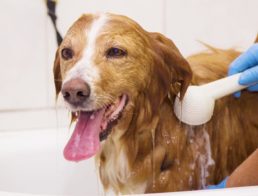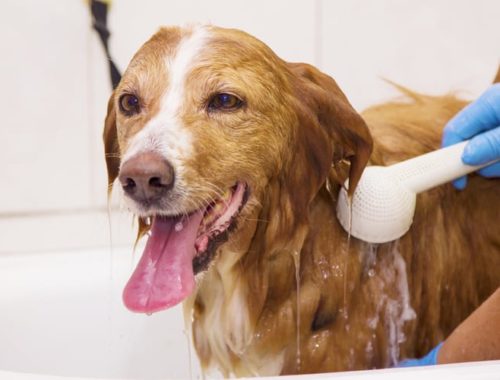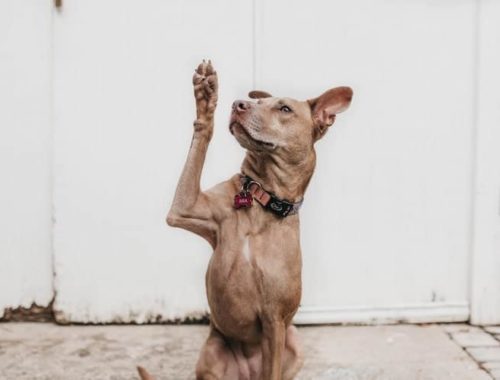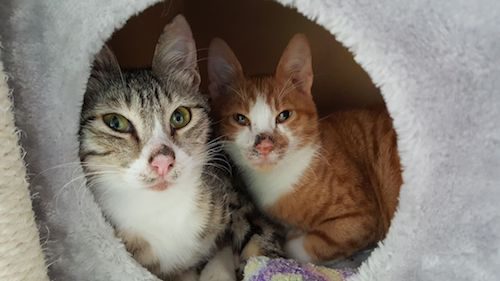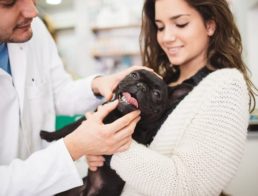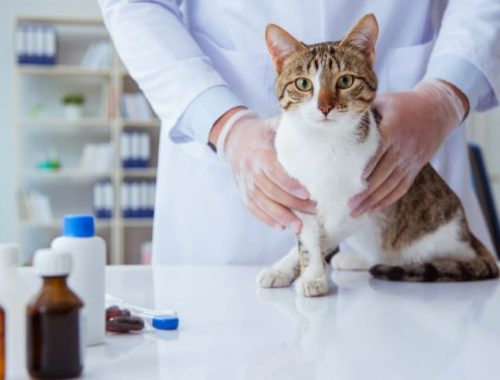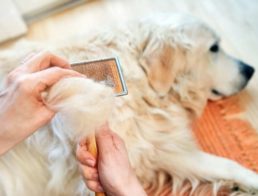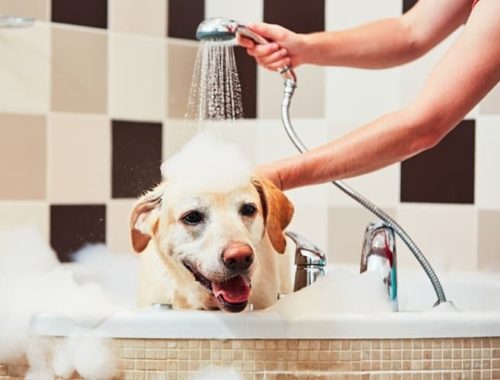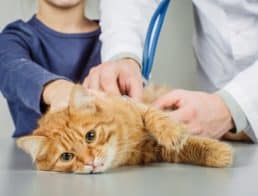While dryness may not seem like a dire problem, the state of a cat’s skin can tell you a lot about their overall health. The skin is the body’s largest organ and is the easiest to observe. What appears there can hint at what is simmering under the surface.
Flakes are the most obvious way that dry skin reveals itself, but you might also observe other signs like itchiness, excessive grooming, and hair loss. Take note if you see multiple symptoms (particularly if they are severe), you may be dealing with something more than just plain old dry skin.
Why Do Cats Get Dry Skin?

Allergies are a common reason for cats to develop flaky skin. Food and/or environmental allergens may be to blame. Infections and external parasites are other common triggers for itchiness and dry skin. Skin infections caused by yeast or bacteria normally occur as a result of other health problems, while the fungal infection called ringworm is spread from animal to animal. Most pet owners are on the lookout for fleas and ticks, but less obvious types of feline parasites like lice and mites can also cause itchy, flaky skin in cats. Other possible causes include:
- Thyroid, kidney, and heart disease
- Excessive bathing or grooming
- Malnutrition
- Stress
- Cold temperatures and low humidity
- Diabetes
- Poor self-grooming
How to Prevent Dry Skin
Nutrition
Cats thrive on a high quality diet that contains lots of protein and moderate amounts of fat. If you’re not sure that your brand of food is an appropriate choice, consult your veterinarian for advice. Cat foods specifically designed to support skin health are widely available. I highly recommend Royal Canin Hair & Skin Care Dry Cat Food for cats with dry skin problems.

Don’t overlook the importance of hydration, which is vital for every organ including the skin. If you suspect your cat isn’t drinking enough, try adding more water bowls around the house. Make sure they are easily accessible and have fresh water in them at all times. Some cats prefer drinking from running sources of water, so a kitty drinking fountain may be a worthwhile investment. Switching to wet food is another easy way to increase a cat’s water intake.
Essential fatty acid supplements moisturize dry skin from the inside out. Unless otherwise directed by your veterinarian, look for products that contain Omega 3, 6, and 9 fatty acids. Topical, spot-on products can also help cats with dry skin.
Flea and Tick Prevention
Avoid external parasites by putting your pet on a parasite preventative all year round. Keeping your cat indoors will also reduce the chances of exposure. If you suspect fleas, you can get a closer look with a flea comb, but it’s much easier to prevent an infestation than to correct one, which is why monthly treatments are so popular and effective.
Grooming
It’s best to avoid bathing your cat unless it’s truly needed. Cats are excellent self-groomers and repetitive bathing can dry out their skin. If you do need to bathe your cat to remove dirt or debris, use a gentle, moisturizing shampoo that is designed for cats.
While excessive bathing is detrimental, regular brushing is useful. Brushing will improve circulation within the skin and distribute your cat’s natural oils. It is especially important for cats who are prone to matting and is a good way to regularly observe the health of your cat’s coat and skin.
Manage Allergies
Cats with pollen allergies benefit from being kept indoors. Any allergens that get stuck in a cat’s fur can be removed with regular baths using a shampoo designed specifically for allergies. Medicated sprays can also be helpful. More severe cases may require prescription medications. If you think your cat has a food allergy, a food trial using an elimination diet will identify the culprit(s).
Cats can have an adverse reaction to all kinds of irritants, including perfumes, cleaning products, and cigarette smoke. Many cats also cannot tolerate dusty litter. You might need to experiment to find one that suits your pet. Walnut-based litters tend to work well for sensitive cats.
Lifestyle
It is also possible to manage your cat’s lifestyle in a way that will reduce the likelihood of flaky skin. Stress can be a contributing factor, and since cats thrive on routine, maintain a structured, feline-friendly schedule. Introduce new pets, food, or environmental changes gradually. If your cat only develops skin flakiness during dry times of the year, a humidifier may help.
Obese or arthritic cats often have difficulties grooming certain parts of their body, sometimes resulting in skin flakes. Avoid this scenario by keeping your cat active, at a healthy weight, and managing pain. Regular brushing will help maintain their coat and skin in the meantime.
Routine check-ups with your vet will catch potential problems early when they are easiest to deal with. This is particularly important as cats age and are at higher risk for some of the potentially serious diseases that can result in dry skin.

